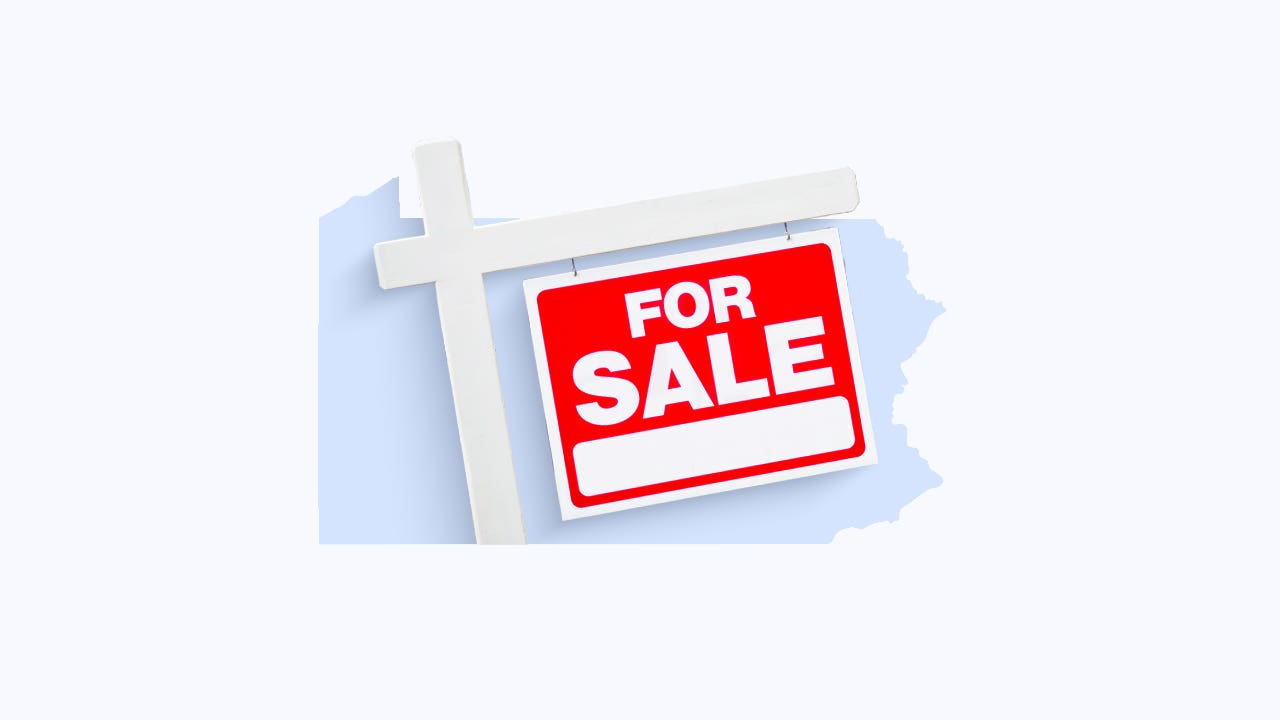Cost to buy a house in Pennsylvania

Home prices have been climbing all over the country, and that’s the case in the Keystone State as well. In fact, the median price of a home in Pennsylvania has risen by about 9 percent since last year, according to October 2024 data from Redfin. And while the cost of purchasing a home is a struggle for many buyers, Pennsylvania’s prices remain relatively affordable when compared to much of the rest of the country.
Of course, the cost to buy a house encompasses more than just the home’s purchase price. There are closing costs to consider, as well as many other expenses. If you’re gearing up to shop the market in Pittsburgh, Philadelphia, or anywhere in between, here are all the costs of buying a house in Pennsylvania.
How much does it cost to buy a house?
Buying a house is one of the biggest expenses most people take on. But the Pennsylvania housing market is quite a bit more affordable than the national market overall: The median price here as of October 2024 was $296,300, per Redfin, while the National Association of Realtors reports that the nationwide median price for the same month was a whopping $407,200.
However, that price tag will vary depending on the specific area in which you’re house-hunting. For example, in Pittsburgh the median price was lower than the statewide median at $239,900. And even in Philadelphia, by far the state’s largest city, it was a bit lower at $262,250 — but in the Philly suburb of Haverford, it was exponentially higher at $1.21 million.
Most Pennsylvania homebuyers will need to finance the purchase with a mortgage loan. When considering how much house you can afford, be sure to take into account both principal and interest payments on your mortgage. Your mortgage interest rate makes a big difference here, so shop around and compare lenders to find the one that can offer you the best rate.
Down payment
The more money you can pay upfront in the form of a down payment, the less you’ll have to borrow for a home purchase. However, saving up for a traditional 20 percent down payment can be a real struggle, especially for first-time buyers. On a $300,000 home, 20 percent comes to $60,000 — a huge sum to pay all at once.
Luckily, you don’t necessarily need to put down a full 20 percent. Some loans allow for a down payment of as little as 3 percent, in fact, and there are many assistance programs that can help cover down payment costs if you qualify. Keep in mind, though, that if you put down less than 20 percent you will likely have to pay for private mortgage insurance, which will be an additional monthly cost.
Closing costs
Every homebuyer will also have to pay closing costs, or the various fees and expenses associated with finalizing the deal. Closing costs can vary depending on your locality and the price of your home, but there are certain expenses that buyers should expect to incur. Common closing costs for buyers include:
-
Lender fees: These can include charges for processing your loan application, pulling your credit report, originating the loan and more.
-
Appraisal: Your mortgage lender will require a professional home appraisal to confirm the home’s value in relation to the loan.
-
Inspection: While this is not a requirement, it’s smart for buyers to pay for a home inspection so that they have a solid idea of what kind of condition the home is in. If problems are found, you may even be able to use them as leverage in your price negotiations.
-
Realtor fees: Real estate agents work on commission, earning a percentage of the home’s sale price when the deal is completed. If you used an agent, who pays his or her fee — you or the seller — will be negotiated ahead of time. Be sure it’s clearly spelled out in your contract.
Unexpected expenses can derail your budget, so make sure you maintain some cash reserves beyond what you think you’ll spend.
Cost to move
Another thing to budget for? The cost of moving into your new home once you’ve bought it. Moving costs can sneak up on you and can vary greatly, depending on the type of move you’re planning and the contents of your home. According to HomeAdvisor, a local move averages about $1,700, and the amount will be significantly higher for a long-distance or cross-country move. And if your new Pennsylvania home is larger than your previous one, you may have to pay even more to furnish and decorate it.
Homeownership costs
Your expenses don’t end after you close on the deal — every home will have a certain amount of ongoing homeownership costs. Beyond keeping things in a good state of repair and the cost of landscaping and/or lawn maintenance, one think to keep in mind is local property taxes. This cost can vary by state and even further by city or county. Pennsylvania’s property tax rate runs about 1.26 percent of the home’s value, so on a $300,000 home, that would amount to $3,780 per year.
Homeowners insurance is another regular cost to expect; in fact, most lenders will require you to secure a policy before they will approve your loan. (Luckily, the average cost in the Keystone State is much lower than the national average.) And if your new home is part of a homeowners association, there will be regular HOA fees to pay as well.
Reducing costs to buy a house
While it’s impossible to eliminate all the costs of buying a house, there are things you can do to help reduce your expenses:
- Ask for concessions: Many home sellers will agree to pay a portion of the buyer’s closing costs, or to cover the cost of a needed repair, in the interest of keeping the deal on track.
- Look at more modest homes: You may have a wish list, but think hard about what is on your must list. If you’re committed to high-end finishes and appliances, for example, consider compromising on size to save. Conversely, if square footage is important to you, buying a fixer-upper may help you get the most for your money.
- Expand your search area: A little flexibility can go a long way. Your dream neighborhood may exceed your budget, but if you’re willing to look more broadly — even if it’s just a few miles farther out — you may be able to afford a comparable house nearby.
- Shop around for better rates: Mortgage rates have been in flux recently, ranging from as low as 6.2 percent to as high as 7.39 percent for a 30-year fixed loan over the course of 2024 alone. Comparing different lenders to see who can offer you the best rate can substantially impact your monthly payment.
Next steps
If you’ve weighed the pros and cons and are ready to shop for a new house, partner with a local real estate agent who knows your specific area of Pennsylvania well. Agents are licensed professionals and experts in their local markets — their expertise, negotiation skills and industry contacts are usually worth the price of their commission.
FAQs
You may also like

How to get a startup business loan

Housing market update: Sales slow, prices rise

What is net price for college?



